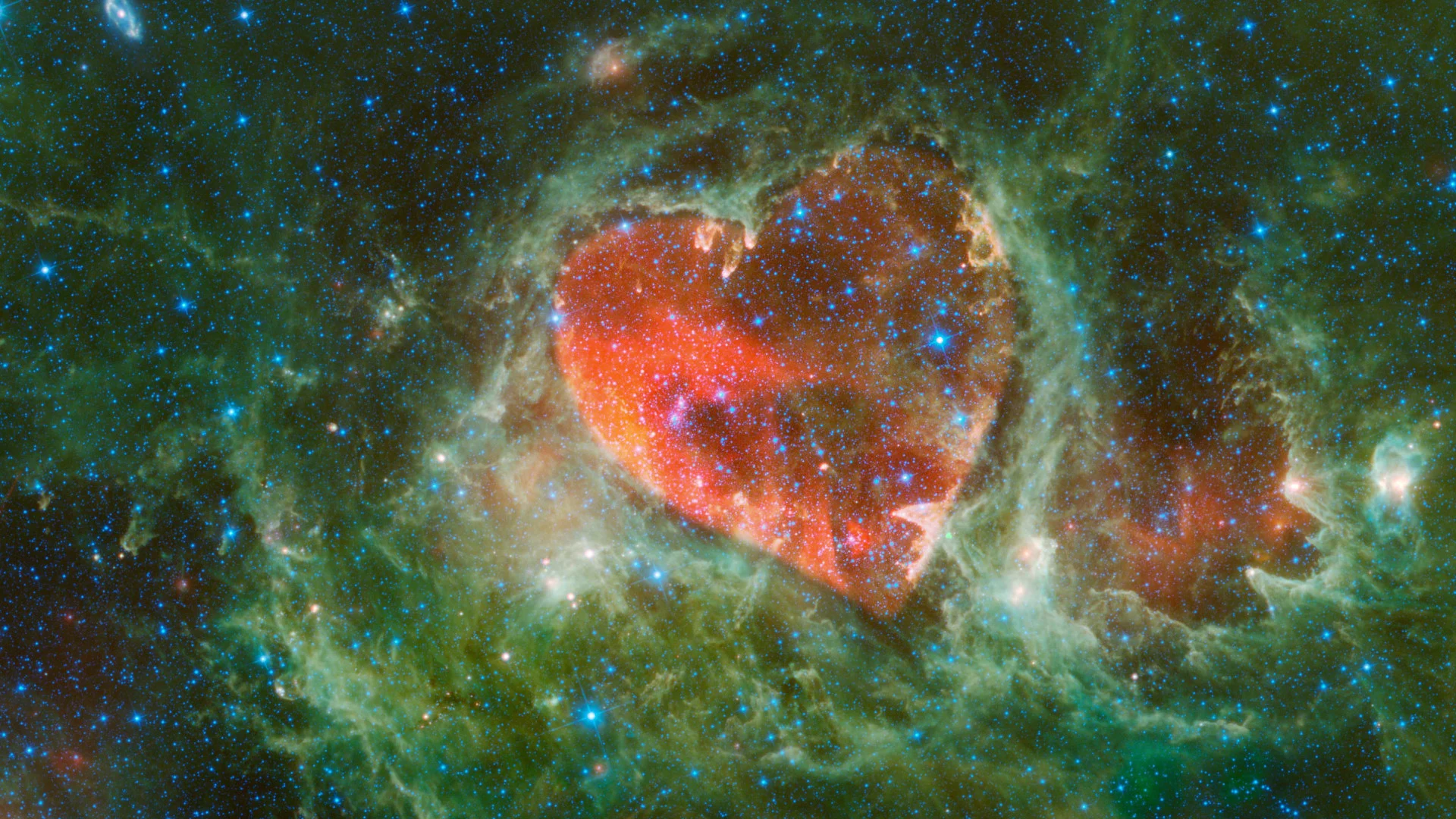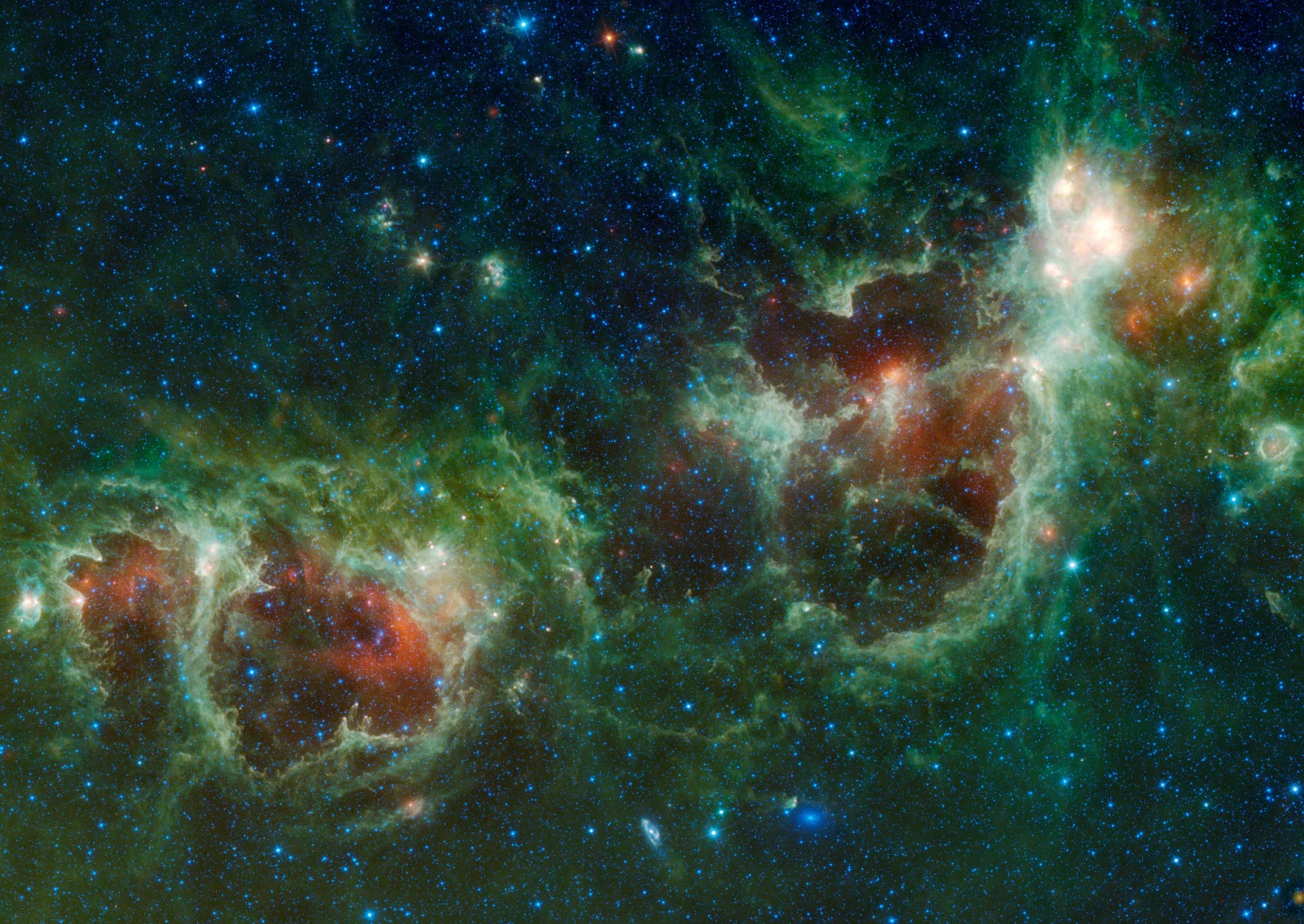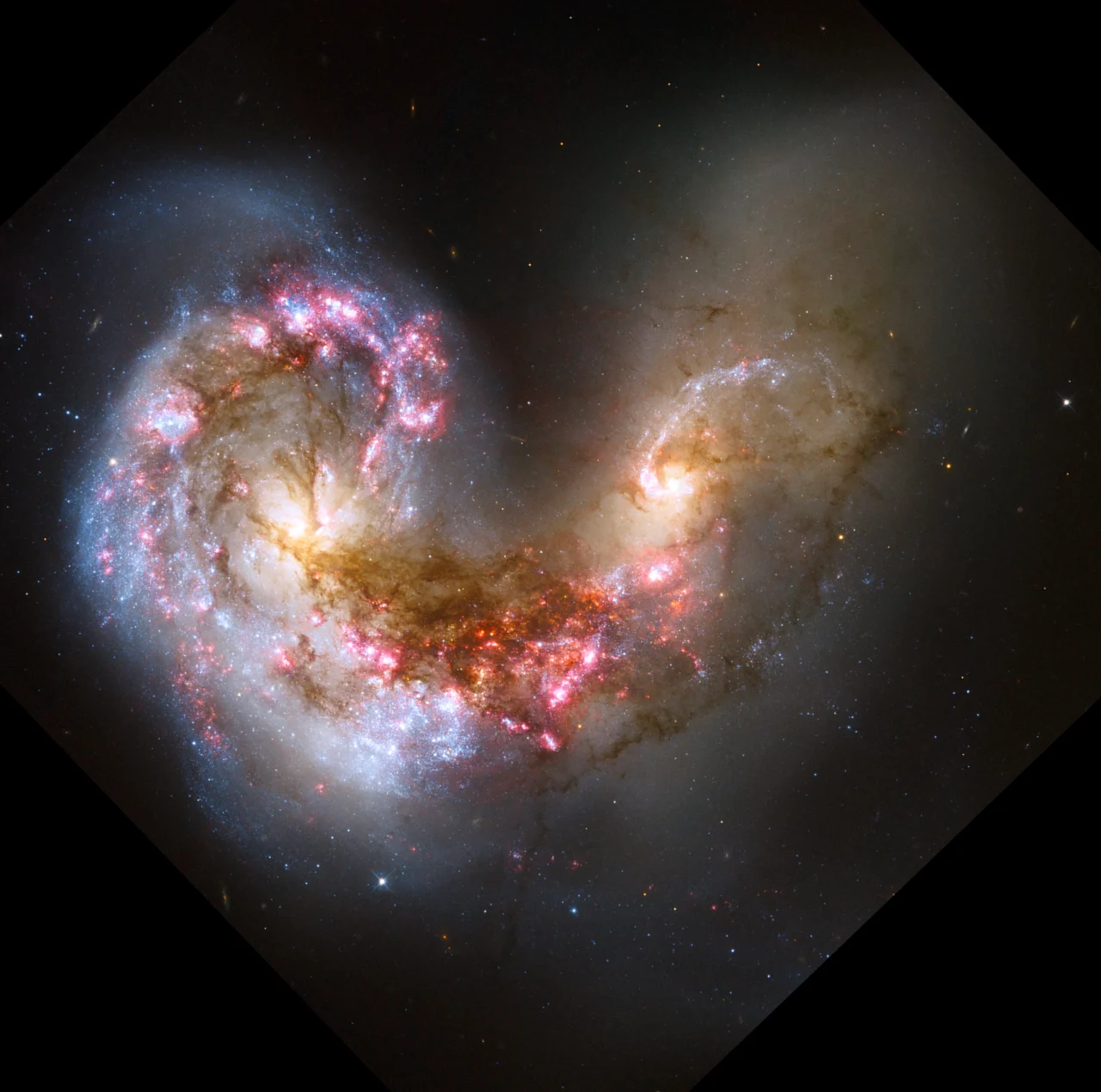
We found love up in space: See the hearts captured in the cosmos
Celebrate the day with these out-of-this-world Valentines.
There is plenty to love out in space, from awe-inspiring alien landscapes to distant cosmic wonders. Over the years, images from spacecraft and telescopes have provided us with ample evidence that space loves us back!
Love Notes from Mars
For nearly a decade, NASA's Mars Global Surveyor circled the Fourth Planet from the Sun, mapping its surface and sending back an incredible stream of imagery. The data provided by the spacecraft was an invaluable resource for scientists studying the world and planning future exploration missions.
Also embedded in that image stream were a number of little love notes from the Red Planet to us back on Earth.

This collage features images captured by the Mars Orbiter Camera, on board the Mars Global Surveyor, from 2000-2003. Credit: NASA/JPL/Malin Space Science Systems
The heart-shaped features shown above are various mesas and depressions on the Martian surface that caught the attention of the mission team. More information about the location and size of each can be found on the NASA JPL website.
While these are all naturally-occurring formations, carved by water and wind over millennia, they still reveal why we have such a love for Mars.
Eros, the asteroid of love
Like many of the objects in our solar system, asteroid 433 Eros was named after a Greek god. Discovered in 1989, it wasn't until the space rock was visited by NASA's NEAR Shoemaker spacecraft in the year 2000 that we discovered just how appropriate it was to name the asteroid after the god of love.

This image from the NEAR Shoemaker probe, taken on February 11, 2000, reveals an oddly shaped feature on the surface of asteroid 433 Eros. Credit: NASA GSFC/JHU APL
"Just in time for its Valentine's Day date with 433 Eros, the Near Earth Asteroid Rendezvous (NEAR) spacecraft snapped this photo during its approach to the 21-mile-long space rock," NASA said. "Taken Feb. 11, 2000, from 1,609 miles (2590 kilometers) away, the picture reveals a heart-shaped depression about 3 miles (5 kilometers) long."
Subsequent images of the asteroid revealed the two upper lobes of the 'heart' as small impact craters, while the rest of the shape resulted from the play of light and shadow across a crater-studded depression in the asteroid's surface.
The Icy Heart of Pluto
Before the New Horizons spacecraft flew past Pluto in 2015, there was no way of knowing just how much love the tiny dwarf planet had for us.
During the flyby, the NASA mission returned stunning images of a vast plain of frozen nitrogen, methane and carbon monoxide, now known as Sputnik Planitia.

This composite false-colour image shows Pluto and Charon, as seen by the New Horizons spacecraft on its approach and flyby in 2015. The high contrast colour scheme of the imagery highlights Pluto's heart-shaped ice feature, Sputnik Planitia. Credit: NASA/Johns Hopkins University Applied Physics Laboratory/Southwest Research Institute
According to NASA, this heart-shaped nitrogen glacier is roughly 1,000 kilometres wide, making it the largest known glacier in the solar system!
Who knew that one of the most distant icy members of the solar system would have the biggest heart of all the planets?!
With Love, from the Sun
The light and heat from the Sun make life possible on this world (literally, it would be a frozen ball of ice otherwise). Every once in a while, though, the star's magnetism gives us a little love as well.

This extreme ultraviolet view of the Sun was captured by the Solar Dynamics Observatory on February 1, 2013. The left panel shows a closeup look at the 'coronal heart' that formed on that day. Credit: NASA SDO
The image above filters out all of the Sun's light except one specific wavelength of ultraviolet radiation (211 Angstroms), revealing activity in the corona, the Sun's atmosphere. Here, magnetic fields generated by the boiling electrically-charged plasma that makes up the surface of the star produce swirls, loops and arches. The dark patches show where tangles in these magnetic fields have opened up holes in the corona, exposing the slightly cooler surface below to space.
On February 1, 2013, one of these coronal holes opened up in the shape of a heart, producing a 'magnetic valentine' that slowly tracked across the face of the Sun.
The Heart and Soul of Space
Around 6,000 light years away, in the Perseus Arm of the galaxy, lies a pair of nebulae that represent the Heart and Soul of the Milky Way.

The Heart and Soul nebulae, as imaged by the Wide-field Infrared Survey Explorer (WISE). Credit: NASA/JPL-Caltech/UCLA
On the right-hand side of the above image is the Heart nebula, so named because of its resemblance to a human heart.
On the left is the Soul nebula, aka the Embryo nebula, but when turned around, this collection of gas and dust looks more like a Valentine's Day representation of a heart.

This view of the Soul nebula, turned 180 degrees from the view in the previous image, reveals its likeness to a Valentine heart. Credit: NASA/JPL-Caltech/UCLA
According to NASA: "The two nebulae are both massive star-making factories, marked by giant bubbles that were blown into surrounding dust by radiation and winds from the stars. WISE's infrared vision allows it to see into the cooler and dustier crevices of clouds like these, where gas and dust are just beginning to collect into new stars. These stars are less than a few million years old — youngsters in comparison to stars like the sun, which is nearly 5 billion years old."
2 become 1
Roughly 45 million light years away is what could be the biggest expression of love in the local universe.

This image, captured by the Hubble Space Telescope in 2016, features the Antennae galaxies, two spiral galaxies that are in the process of merging together due to their mutual gravitational pull. Brilliant blue regions dot the image, indicating where intense star-formation is occurring. Credit: NASA, ESA, and the Hubble Heritage Team (STScI/AURA)-ESA/Hubble Collaboration; B. Whitmore (Space Telescope Science Institute)
Named for the two long antenna-like structures that extend out from the pair (and far past the edges of the above image), the Antennae galaxies began their interaction hundreds of millions of years ago.
As the two merge together, they are sparking a burst of creation. Billions of new stars are being born, which are no doubt forming a dizzying variety of different planetary systems in the process.
According to NASA: "They give us a preview of what may happen when our Milky Way galaxy will collide with the neighbouring Andromeda galaxy in several billion years."
(Thumbnail image of the Soul nebula courtesy NASA/JPL-Caltech/UCLA. A pink heart has been overlaid on the image to emphasize the nebula's Valentine shape)











